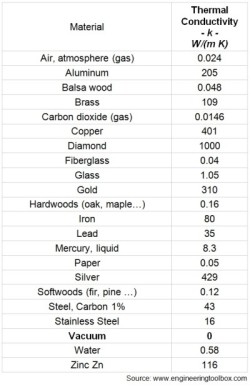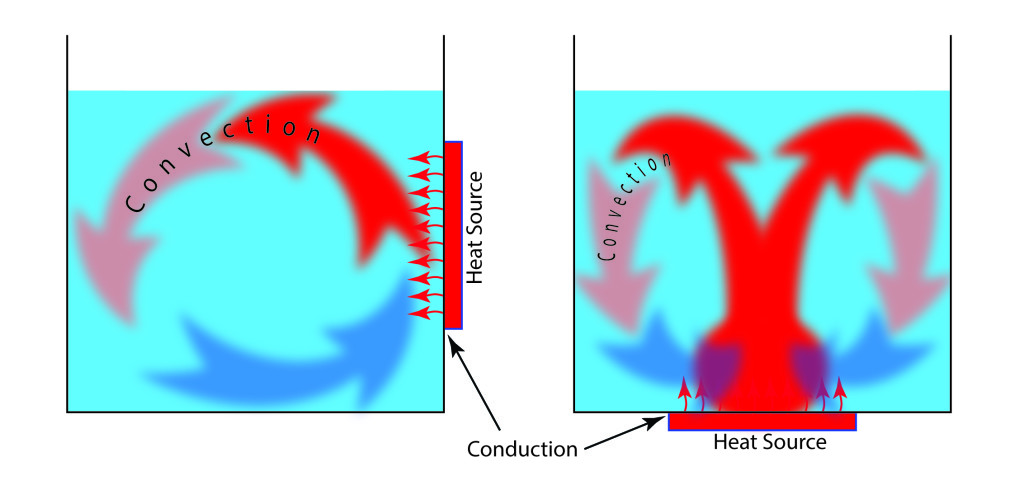Heat conductivity is a measure of the ability of a material to transfer heat within itself. For example, if you heat one end of a short piece of copper wire, the heat is quickly distributed throughout the wire by conduction. This can be easily demonstrated using a short piece (1 to 2 inches) of heavy gage copper wire and a small torch or gas lighter. Hold the wire at one end and apply the torch to the other. It won’t take long before the copper becomes too hot to hold.
Heat moves by conduction through different materials at different rates depending on their structure. If one were to substitute a glass rod for the copper wire in the above example, it would take a considerable time for sufficient heat to be conducted through the glass rod to make it uncomfortable to hold. Copper is a better heat conductor than glass.
In general, we think of metals as good conductors. In fact, metals vary widely in their conductivity but, overall, they are better conductors of heat than most liquids and gasses. Other solids also vary in their capability to conduct heat. Wood is an example of a solid that is a poor heat conductor. A poor conductor is called an insulator. The following chart shows the conductivity of several common materials. A higher number indicates better conductivity.
 The amount of heat that can be conducted also depends on an object’s cross section, the distance of heat travel (thickness of the material) and the temperature differential between the heat source and destination. A thin copper wire will conduct less heat from one end to the other than a thicker wire of the same length in a given period of time. A longer wire will conduct less heat from one end to the other. Increasing the temperature of the heat source will result in more heat conduction provided that other conditions remain the same.
The amount of heat that can be conducted also depends on an object’s cross section, the distance of heat travel (thickness of the material) and the temperature differential between the heat source and destination. A thin copper wire will conduct less heat from one end to the other than a thicker wire of the same length in a given period of time. A longer wire will conduct less heat from one end to the other. Increasing the temperature of the heat source will result in more heat conduction provided that other conditions remain the same.
With relevance to industrial cleaning, heat conductivity is a major consideration on many fronts. For example, the efficient conduction of heat from heaters into a cleaning bath will have a major impact on the ability of the heaters to achieve and maintain the necessary process temperature. Heat sinks (devices to collect and dissipate heat from electronic components) are found in controls and ultrasonic generators.
Interestingly, as you will see above, water is a notably poor conductor of heat even compared to many other liquids despite its extremely high heat capacity. It is for this reason, that we can not rely on conduction alone as a means of distributing heat within a cleaning tank. Some sort of mechanical movement is needed to distribute heat. In some cases this motion is supplied by simple convection. Convection is a movement within a fluid or gas caused by the temperature differential within the liquid. Warmer material is lighter in weight and therefore rises displacing cooler material which moves toward the bottom. Convection is not dependent solely on the conductivity of the liquid although it does play a minor role in distributing heat on a small scale as the hotter and cooler material mix.

In other cases, it is necessary to employ some other means of mechanical mixing to get the job done. A simple propeller-type mixer or a pumping loop are common ways of doing this.
– FJF –



 English
English Spanish
Spanish Chinese
Chinese Canada
Canada Mexico
Mexico United Kingdom
United Kingdom



